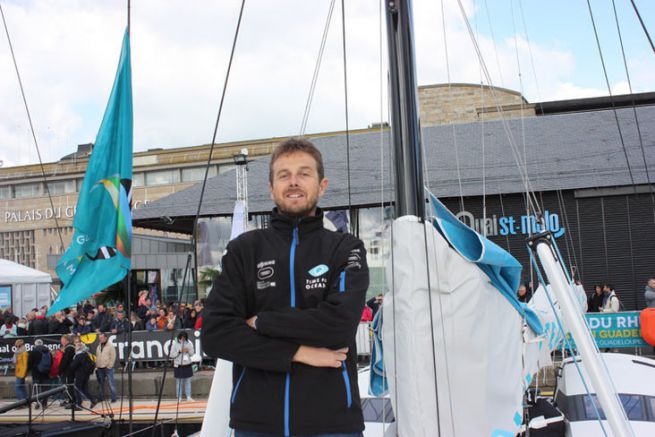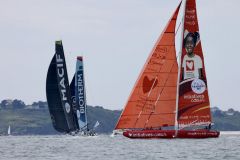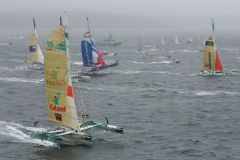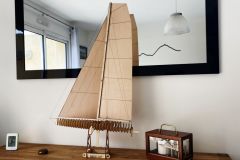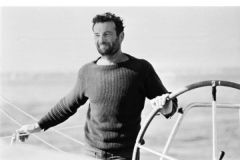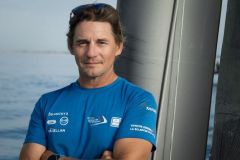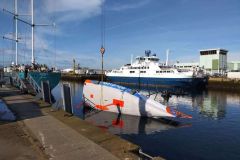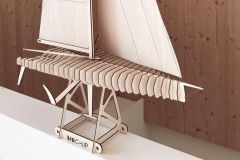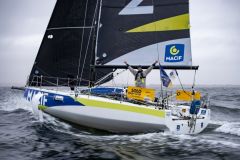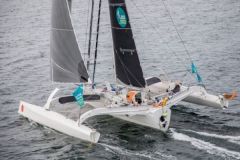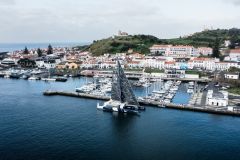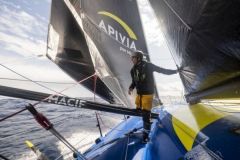Stéphane Le Diraison welcomes us with great enthusiasm, happy to show us his refurbished boat now under the colours of "Time for Oceans". Enthusiastic, he explains his project with stars in his eyes. Story of an exciting meeting.
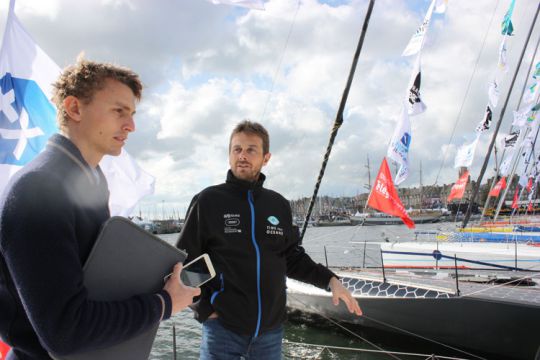
What have you done on your boat since the last Vendée Globe[Stéphane had dismasted in southern Australia after 42 days at sea]?
There have been a lot of things done. Obviously when you dismantle, the good news is that you have to start on a new rig. The boat is from 2008 and we took advantage of the dismasting to put a mast to the taste of the day. It is a 2018 mast, which is significantly lighter. We gained 45 kilos on the rigging for a 400 kg mast (gauge weight). It's a more technical mast. It allowed us to remove a lot of weight from the bulb.
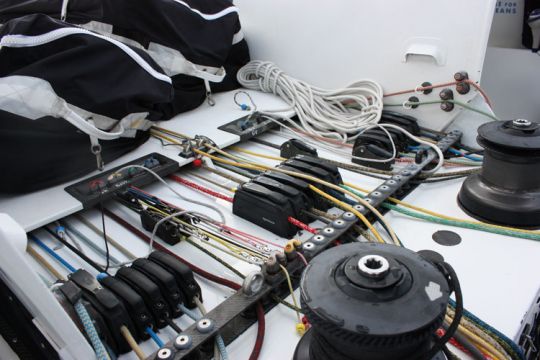
You announced that you had gained 700 kg on the boat, how do you gain so much weight?
It's a Twingo parked on deck that we landed!
We worked on the batteries. We changed technology and gained 100 kg. More small optimizations. We hunted down the weight, inside there's only carbon left. We put the boat on a diet. We were more rational about the fittings. Certainly the piano is still quite full, but we divided it by two because we had forests of cleats... We did a lot of work everywhere of optimization. Unfortunately, it won't be enough to beat the latest generation boats, but it will allow you to gain a substantial amount of performance.
We also worked on the sails. Because inevitably, with the mast, my main sails have left. All flat sails (mainsail, J1, J2...) are new. We were able to make lighter sails. For example, my mainsail is 20 kg lighter than the old one. 20 kilos is three packs of water. Imagine 3 packs of water less than 13 meters high! Just for the mainsail! We did a great job and it shows. There were unplayable boats for me - among them the former Queguiner who is now called Monin - I managed to beat him on the Azimuth trophy although Isabelle is sailing at a very good level. With all these optimizations, I was able to improve the level of play of this boat.
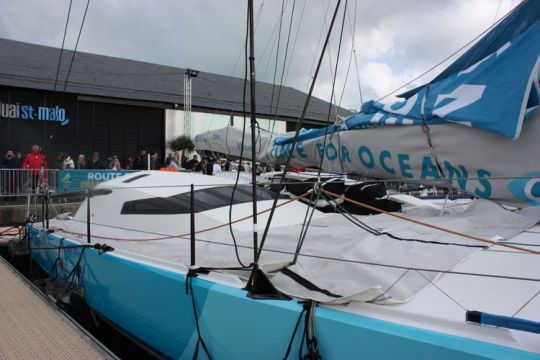
Can you introduce us to your boat, tell us its story?
What's funny, here in Saint-Malo we're next to Hugo Boss and that my boat is an old Hugo Boss, the one from 2008. It was the first boat on which Alex Thomson distinguished himself by being a clown at the end of the keel in a full suit. This boat has a history, it is the first boat to have covered more than 500 miles in 24 hours and even today to cover 500 miles in 24 hours is not insignificant. It's a boat that was born well.
I picked it up in November 2015 in a totally improbable place. It had been bought by a Polish man and I picked it up in Gdansk. I started touring Europe to bring him back to La Ciotat. We did a refit work for the Vendée Globe 2016, we had put it back very clean, but we had kept the old rigging. So Vendée globe 2016, I was 10th at the time of the dismasting and I had done the 4th e better time between good hope and Cape Lewin. It took me a little while to get into the race because I had a little trouble. Nothing serious, lots of stupid little technical stuff that was ruining my life. And then in the Indian everything was going well and I could finally let my fighting spirit run free.
My epic dismasting as a competitor is a big frustration, because when you start a race you want to get there. But as a navigator it's a huge experience, very rich. Being alone on a thing like that in the southern seas off Tasmania with a piece of mast that is cutting the hull with 5-metre waves crossing the deck, knowing that no one will come to get us: it's a great experience as a sailor for self-control, for taking control of your boat. When I was able to moor it in Melbourne alone after 15 days at sea under jury rig, it was a great satisfaction, almost like a victory in terms of emotion. A sense of accomplishment. When you start from the Vendée, you have to face whatever happens. I had a major damage, I brought my boat back!
The next step takes us to 2017. The reconstruction of this project, the repair of the boat, the repair of a new mast, the assembly of all this in the spring and then the first races of the championship in May and here I am on the Route du Rhum 2018. It is yet another great victory to have put this boat back in a better state than it was before, with beautiful partners, with a beautiful project, a beautiful message, it is a great satisfaction.
Now heading for the next three seasons, the contracts run until June 2021. This is the beginning of a great and beautiful adventure.
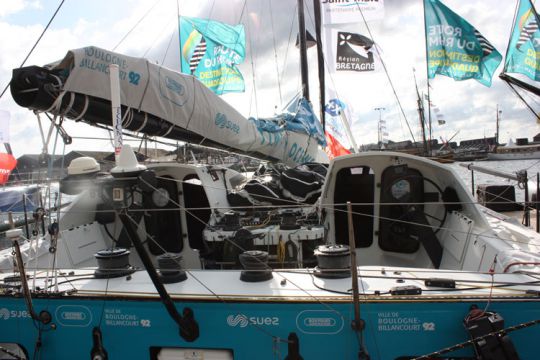
Why does your boat have two deckhouses?
The particularity on the deck of the boat are the two roofs, there are not many of us left to have that. It was chosen for several reasons: aesthetic first, it gives a rather particular aspect to the boat with this cockpit very remote and it allows, when you go from the cockpit to the front, not to expose yourself on the front deck. It also allows you to store the sails in front of the roof and bring them back to the front very easily. The deck of the boat is very flat, I can pull them easily without breaking my back. If the conditions are very harsh and it's too heavy, I can put a piece of it in, put it on the winch and bring them back like a horse.
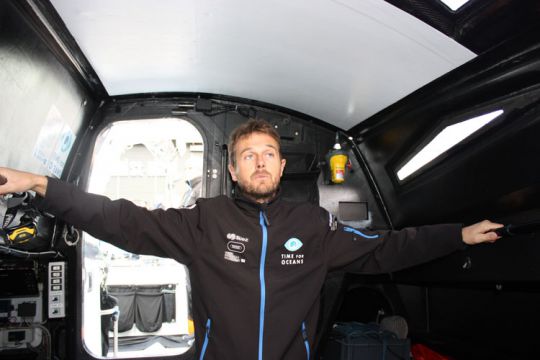
The particularity of the two roofs is also the two spaces inside the boat. Two rooms, two atmospheres: either port or starboard. Comfort on board a racing boat is ergonomics. I hold myself well thanks to the handrails. There is a good height under the beam, I can undress, put my things to drain, to dry easily. The sitting position at the chart table is very well thought out, the seat is wide and as it is inclined I can sit on one side or the other depending on the gite. It's a little weight, but the idea is to have a very comfortable sitting position to release the contraction of the back muscles. I can really relax. However, I don't use the seat to sleep even for 5 minutes, I lie on a mattress against the engine block. I have worked with sleep doctors who believe that to recover well on very short sleep times you have to be longer.
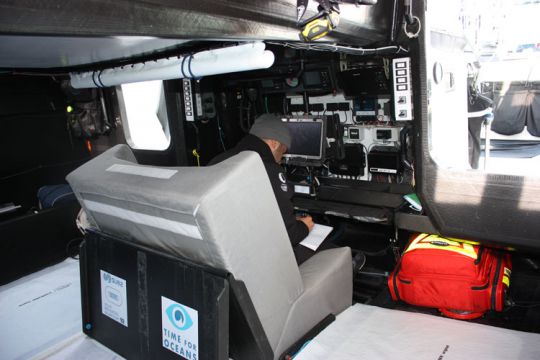
This teacher studied Laurent Bourgnon's sleep and trained him when he won - it was very innovative at the time to study sleep. The recordings they made when Laurent was sleeping at the chart table (on a trimaran it was even more spartan) or in the bulk cockpit showed that it was a very poor recovery. We have the image of a furry sailor (a bit like Alex), but it's just an image we give. It is a business, in what they say there are often many intoxicated people. For example, Michel Desjoyaux tells anyone who wants to hear him say that to win the Figaro solo you don't have to sleep, it's pure intoxication. In truth, the guys who win have understood that you have to sleep and that the more you manage to sleep, the more lucid you are.
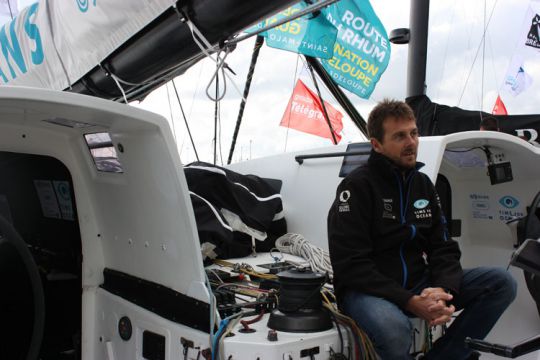
Why did you choose this boat?
In 2015, when I was looking for a boat, there were not many on the market. I didn't want to decide to take an old boat, as a competitor, I still wanted a tool that would allow me to do interesting things. This one was more modern than the others on the market. Besides, it's a Finot plan. I had several Finot plans, a Mini and a class40. I like his drawings, they are hyper-balanced boats, very fine at the helm. It's reassuring for a first experience in IMOCA rather than going on a fiery horse.
This boat can still evolve. The structure allows to implant foils quite easily. Especially since the boat has been conditioned for Alex Thomson who has a reputation for pulling hard on the boats. Here, the safety factors are much higher. The platform is 100 kg heavier than Brit'Air, which is the quasi-sistership of my boat, because it is not the same structure and not the same safety coef.
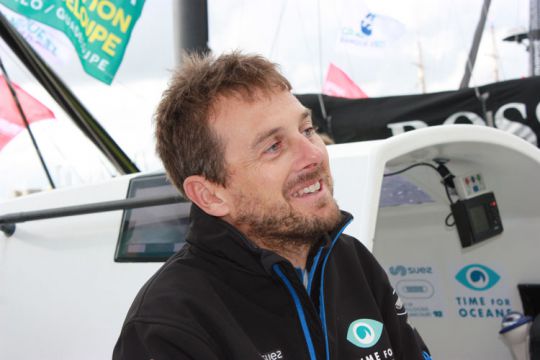
So what are your objectives for this Route du Rhum?
The objective is to be at the performance level of this boat. I look at the race time of the last winner François Gabart. He saved in 12 days and 4 hours with a boat that was the ex-SMA, I'll try to get closer to that time. This is already an ambitious objective because SMA is a potentially faster boat. I have more of a time objective than a ranking objective. It's difficult when you have a boat that's not equipped with foils and that's not of the latest generation to have classification claims. My approach is more to concentrate on performance and a good navigation, to make this boat progress well and if I cross in 12 days at the finish there is a chance that it will be quite a question of ranking. That was my approach in class40. I had a boat that was a little equivalent, a boat a little out of date with which - on paper - it was not possible to play for the win. I didn't ask myself any questions, I did my nav' and at the finish I finished 4th. It was pretty good!

What will be the difficulties on the course in terms of weather strategy or personal management?
The first difficulty I am integrating is that for the qualification for the Vendée Globe 2020 it is a good idea to finish the Route du Rhum. That would put me on the side of those who qualify. This is a significant constraint because it means that in periods of attack I will certainly sound a little different. Generally speaking, to rank you have to finish.
As far as the weather is concerned, it's still too early to say, but a priori we're going to be in a low-pressure system. The high is collapsing, the lows will start coming in like little trains. It's going to be a timing thing. Will we be in a depression? Between two depressions? In a more or less certain way, whether in the Channel or in the Bay of Biscay, we will have to go through a period of fairly strong winds. It will be a delicate moment.
Then at the start we'll be 123! It's not nothing, it's high risk. There are several categories of boats with different speeds, with very different levels of navigators depending on the categories. At the time of departure, no mistakes should be made. There is a lot to lose and not much to win. Especially since there is no recall possible, if someone crosses the line 5 seconds early it takes 4 hours. It's worth thinking about when you leave.
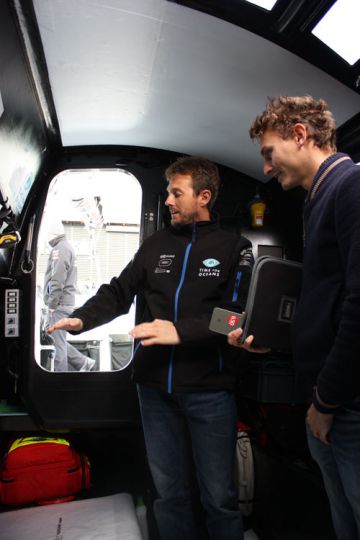
You've already raced a Route du Rhum, what is your most memorable experience?
In 2014, I tore my solent after 6 hours of racing. That was not good news at all. The wind had gone up very strong at the passage of Ushant, we had 45 knots and I had my sail in tatters. I couldn't collapse without climbing to the masthead to free her. I had to wait almost for Portugal because the waves had to be relatively manageable. It was tonic! I have a vivid memory at the top of the mast to take 3-4 metre swings on each side and a rather extreme level of self-improvement. Sailors often complain about climbing the mast, but you don't necessarily realize what it's like to climb a pole like that while moving. It's very violent. Everything went well so it remains a good memory.
I have many other good memories. What I get is the tour of Guadeloupe which is full of traps. We have the excitement of the finish, we feel like we've arrived and yet it's a difficult navigation. This is the last obstacle to overcome for the Route de Rhum, and not the least.
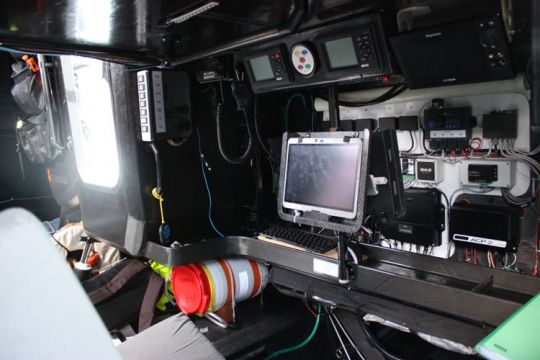
In short, how would you describe the Route du Rhum?
For me it is the "reference transatlantic race". If I had to complete, it is because there is a mix between types of boats and profiles. It has an extremely rich history, with the victory of a woman Florence Arthaud - the only one in the great ocean races. Not to mention all the beautiful stories that have been written around this Route du Rhum.
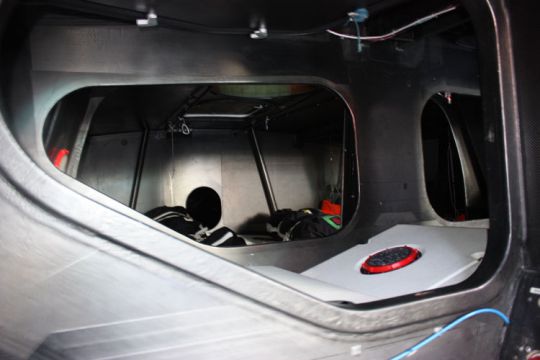
Can you introduce us to the Time for Oceans project?
Time for Oceans is a project of which I am particularly proud. I had been working for years on pooling my commitment to sustainable development and my passion for the sea. The Vendée Globe showed me that popular enthusiasm can be a space of expression that allows me to carry messages. The detonator was a "one planet unit" that took place in Boulogne Billancourt in 2017 - Boulogne Billancourt was my sponsor since 2010. I came across speeches from some CEOs who said that the transition to sustainable development is a multi-stakeholder action that engages us all collectively: government, business and citizens. I thought that was the message I wanted to convey. It is not an activist message, just based on an observation, but a message that encourages action with actors who are already in action: a city that has done a lot in the study of neighbourhood reconstruction - which has been awarded the prize for being an eco-neighbourhood; Bouygues Construction which had set itself major construction objectives with natural materials and CO2 limits; Suez which is heavily invested in the circular economy, the depollution of the oceans..
The idea is to seek out the spectators, the citizens through small challenges, nice messages... It is not meant to be moralizing or pessimistic. Can we make you think about small gestures? Replace plastic water bottles with something else? Throw a little less? A lot of little free things that, when put together, have enormous consequences. For the time being, Time for Oceans is a rallying message, we have a vocation to get closer to association. We are not in competition, but on the contrary we are together and if tomorrow 100% of the boats carry a message on the environment, it would give an echo to carry this message loudly.
